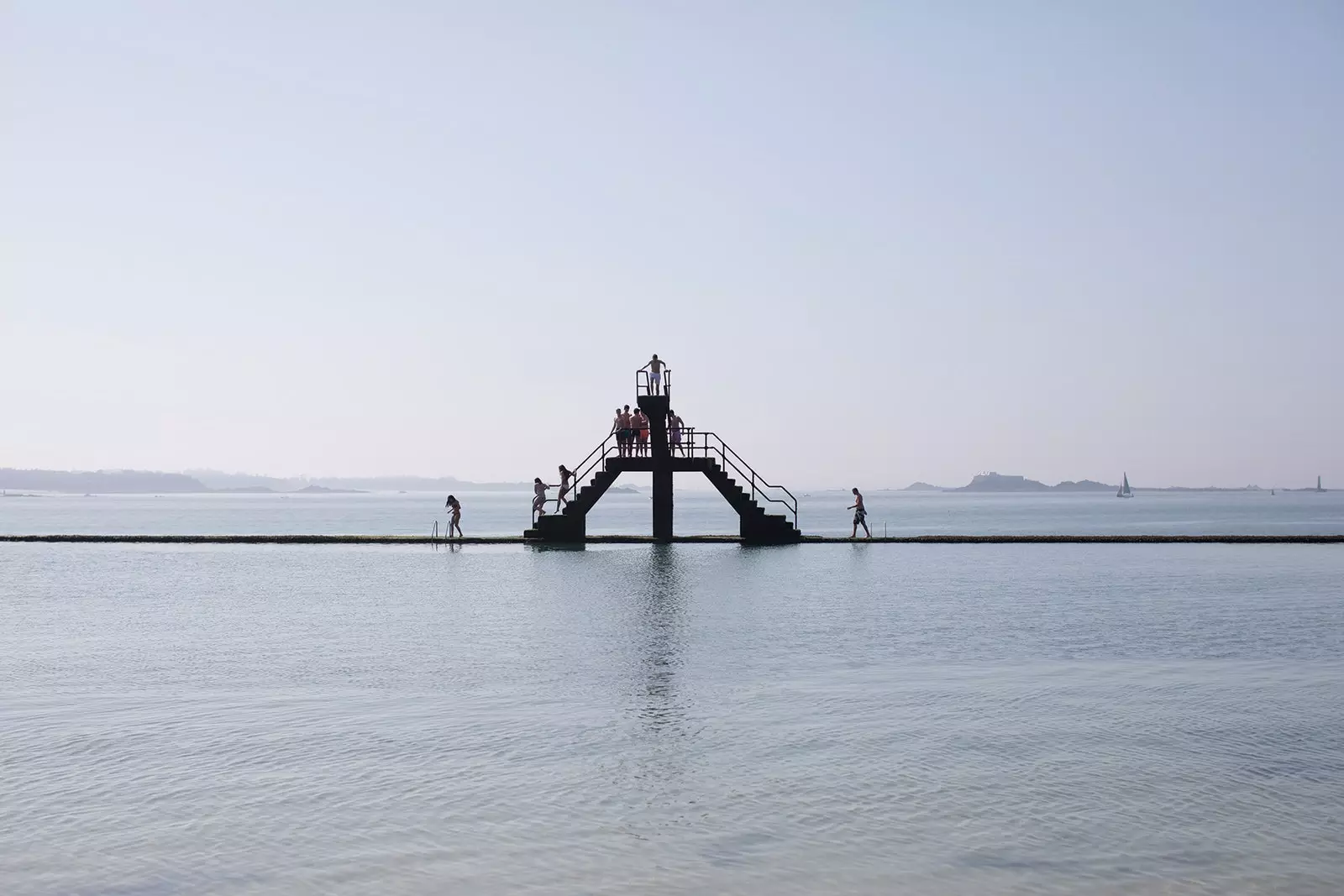
The natural pool of Saint-Malo beach at low tide
Brittany It is a curious land: here you fish with tractors and oysters are cheaper than sardines. Located at the end where France puts an end to Europe, this region in the shape of a roaring dragon's head is the magical cauldron in which the legends of the Merlin the magician and the adventures of Asterix and Obelix.
Spiritual and heretical, elegant and rural, wild and educated, Celtic and Gaelic, Ancient Armor, the country of the sea, was the object of desire for painters and philosophers who wanted to see what the fog hides and reflect on the tides and their effect on some constantly changing landscapes.
Nothing is permanent, nothing is real. Brittany is a space where the sky blends with the sea and creates mirages on the horizon and in which, if you pay attention, you can feel the pulsations of the universe.
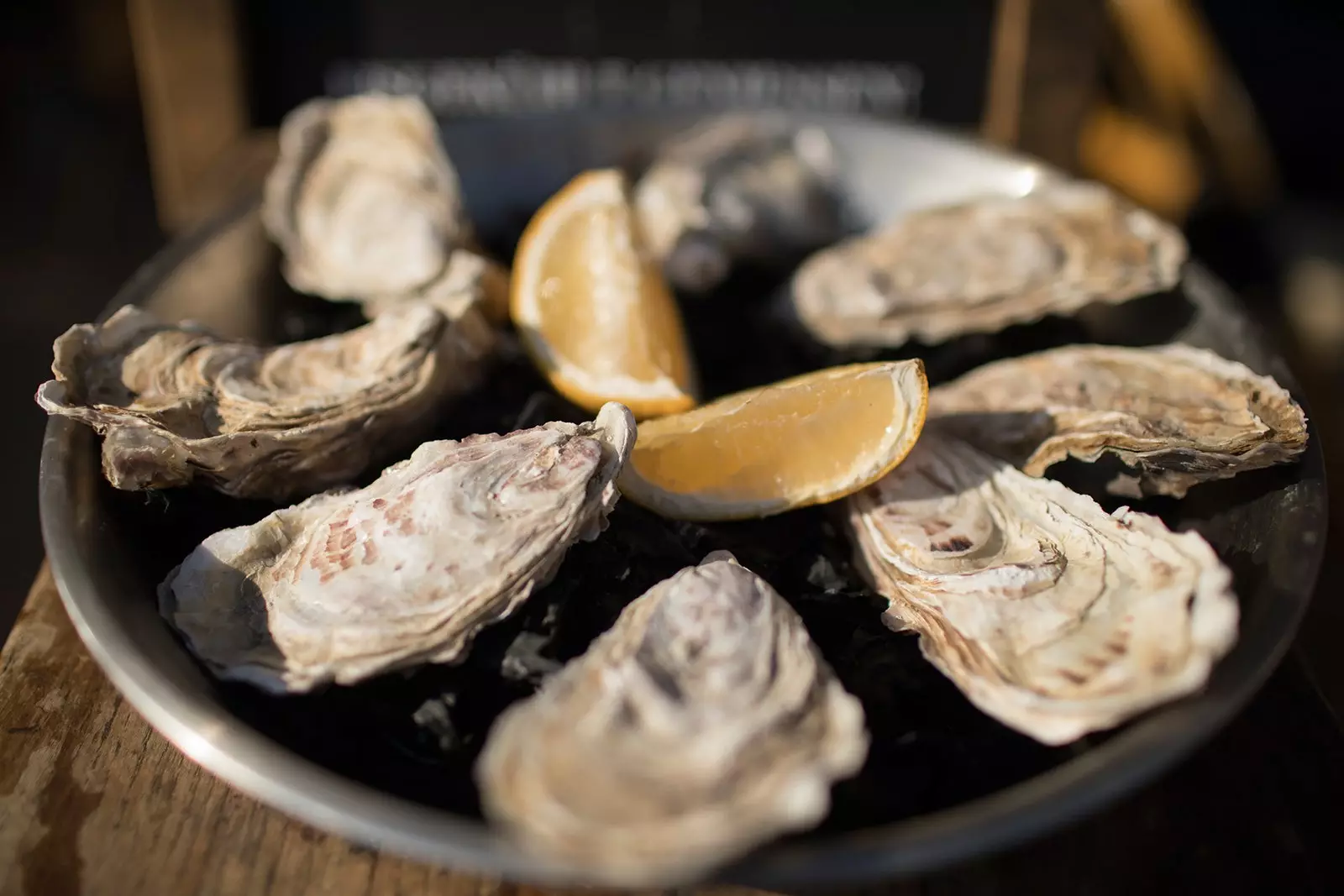
Cancale oysters
But Brittany is also a tangible place of timeless beaches and dramatic cliffs, lush forests and medieval castles; of butter cookies, crêpes and mussel casseroles as a single dish ; of sailor striped shirts and wellies to go to the beach.
It represents the perfect summer for those fleeing the overcrowded Mediterranean and the comforting feeling of a hot chocolate on a rainy afternoon. Brittany is the accordion of Yann Tiersen and the summer loves of Éric Rohmer.
All these Brittany –and some more, each one finds his own– are contained in the path of the customs officers: more than 1,800 kilometers that border the Breton coastline along its entire length, from Mont St-Michel, already in Normandy, to La Roche-Bernard. It was drawn in the s. XVIII in order to control smuggling and, after being abandoned for centuries, it was recovered exactly 50 years ago under the nomenclature GR-34, for the enjoyment of walkers.
Going through it in its entirety is a feat reserved for which you have to have a lot of time (and very good legs). But it works for us excuse for, helped by a car, to combine the walks with the visit to the points of interest.
Thus, we propose a trip that will concentrate on the first stages of the path, on the emerald coast and the pink granite one, from where, attracted by the flashes of the headlights, we will take a jump to the small island of Ouessant, the last inhabited land before entering the far reaches of the Atlantic.
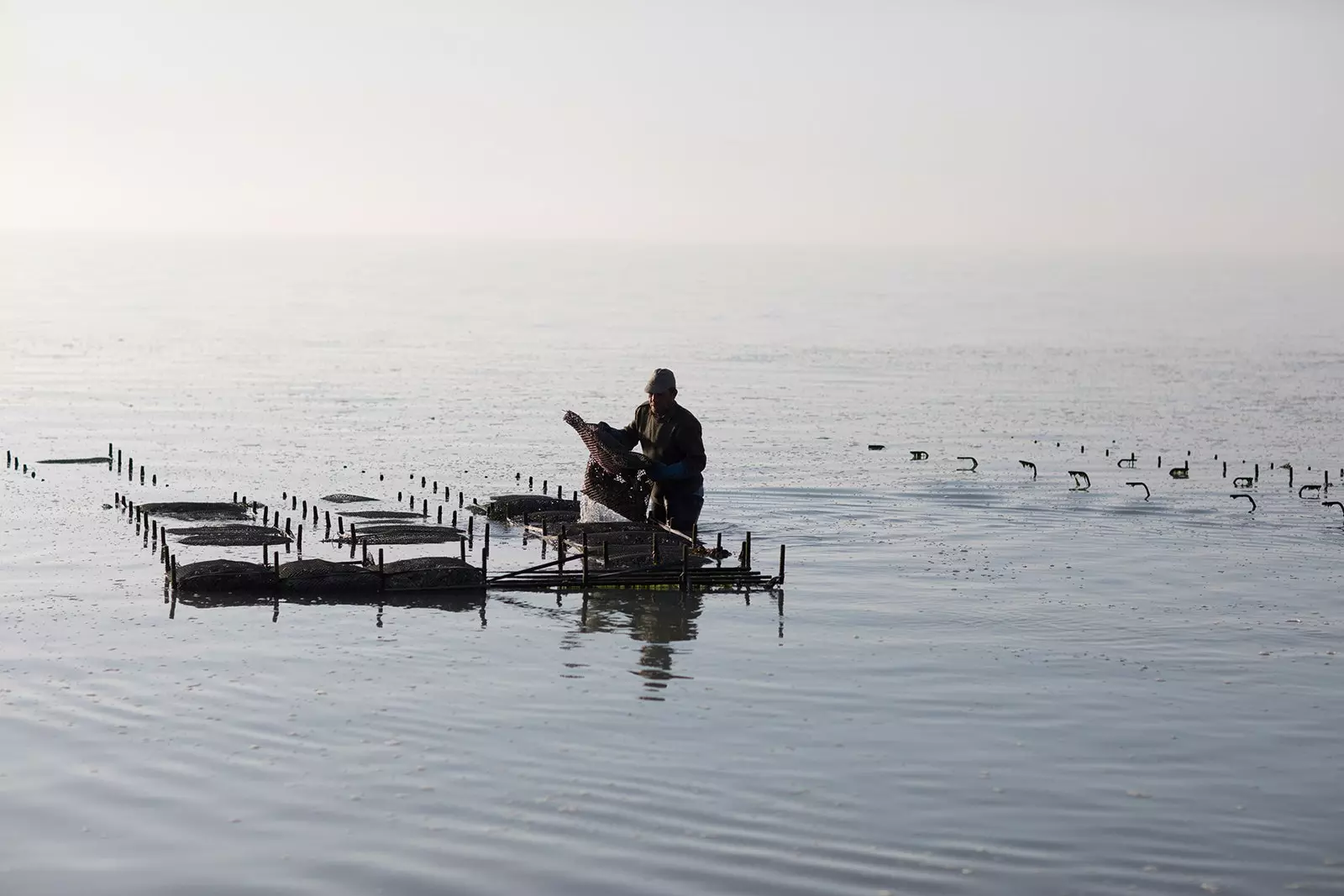
Oyster plantation in Cancale
The starting point is Cancale, a quiet town in the shadow of its most famous neighbors, the Mont St-Michel and Saint-Malo . Until Cancale tourists do not arrive, they are visitors, mostly locals, who come to enjoy the small pleasures of life, which here means an oyster-based feast.
In the alleys near the central square of Cancale it smells of vanilla and cinnamon, cardamom and nutmeg, oriental spices that tell us about the adventures of the Breton corsairs and navigators who brought exoticism from distant lands and remind us that this coast was the entrance to Europe for the treasures conquered by the Company of indies.
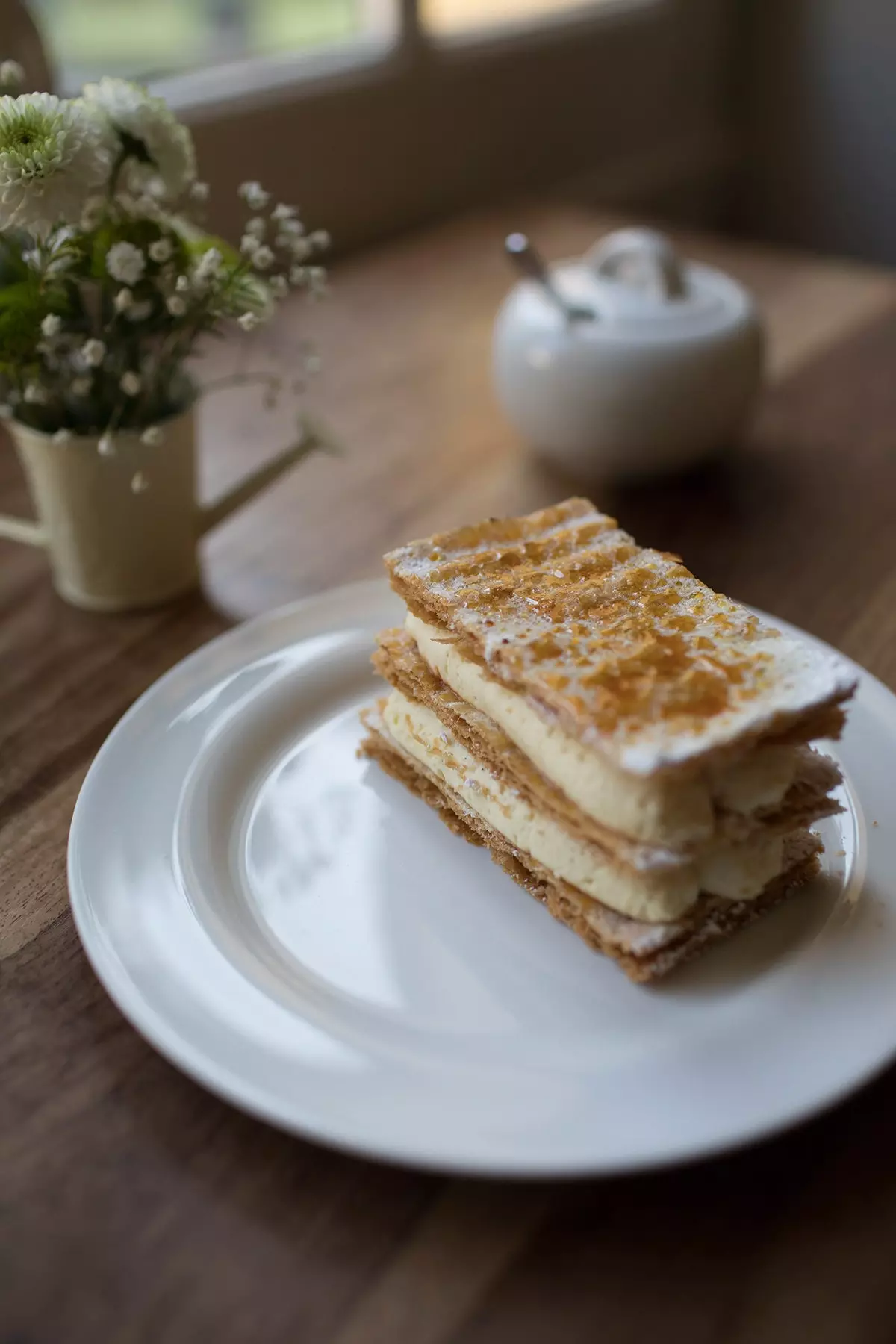
A portion of the unmistakable mille-feuille of Grain De Vanille, in Cancale
The heady scent comes from a small shop next to a handsome 18th-century mansion. The store has been, for two decades, the point of sale for the dressings that have made chef Olivier Rollinger's cuisine world famous, and the mansion, the typical Cancale sailors' house –clarification: in Brittany the sailors are not poor fishermen, but prosperous shipowners and shipowners – It is where he spent his childhood the chef (also the corsair Robert Surcouf, two centuries earlier) and the headquarters from which he now runs a family business that includes, in addition to the shop, a restaurant, Le Coquillage, several nature lodges, a reflexology center and Celtic baths, and a gastronomic school.
Going down the street, the sensual spicy aroma gives the witness to that of the fresh-from-the-oven puff pastries by Yannick Gauthier, Rollinger's partner in desserts and owner of Grain de Vanille patisserie and tea room. **
Cakes with apple or peach in winter, with red fruits in summer , what is never lacking – actually, yes, they run out quickly – are the strudel. Gauthier's are unmistakable and so delicate that As soon as you eat one you will want another.
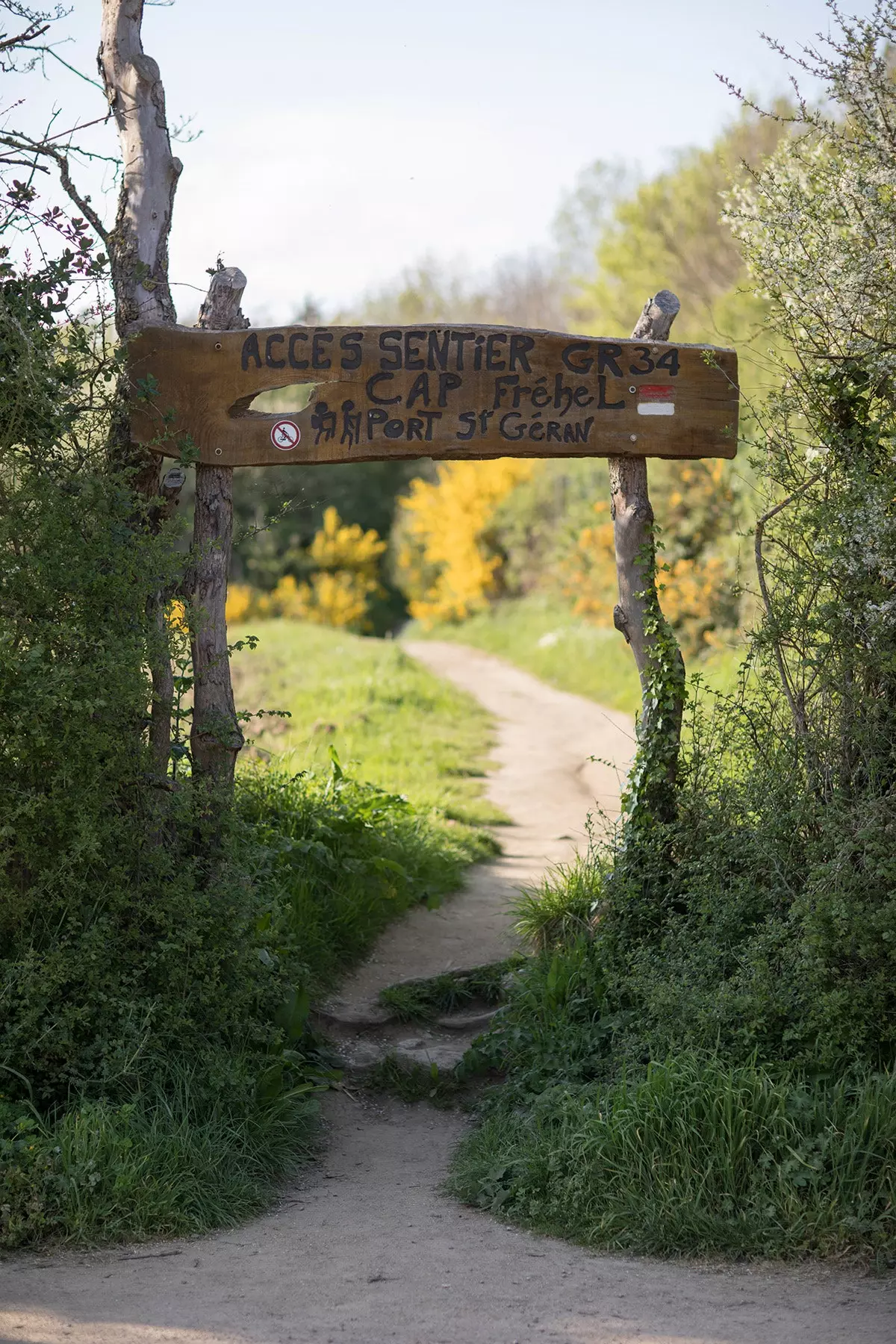
A section of the GR-34, the historic path of the customs officers
But the heart of Cancale is on the beach, beyond the lighthouse, where the low tide reveals rows of oyster beds, the economic engine of the town, like vineyards in the mud. Tractors bustle between the stranded boats and the 'sea vines'. They have little time, in a few hours the sea will have flooded everything again.
Meanwhile, the horizon line of the retreating sea merges with that of the sky and in the background, through the mist, the sharp profile of the Abbey of St-Michel can be made out. From the port of Calcane it takes five hours on foot to Saint-Malo.
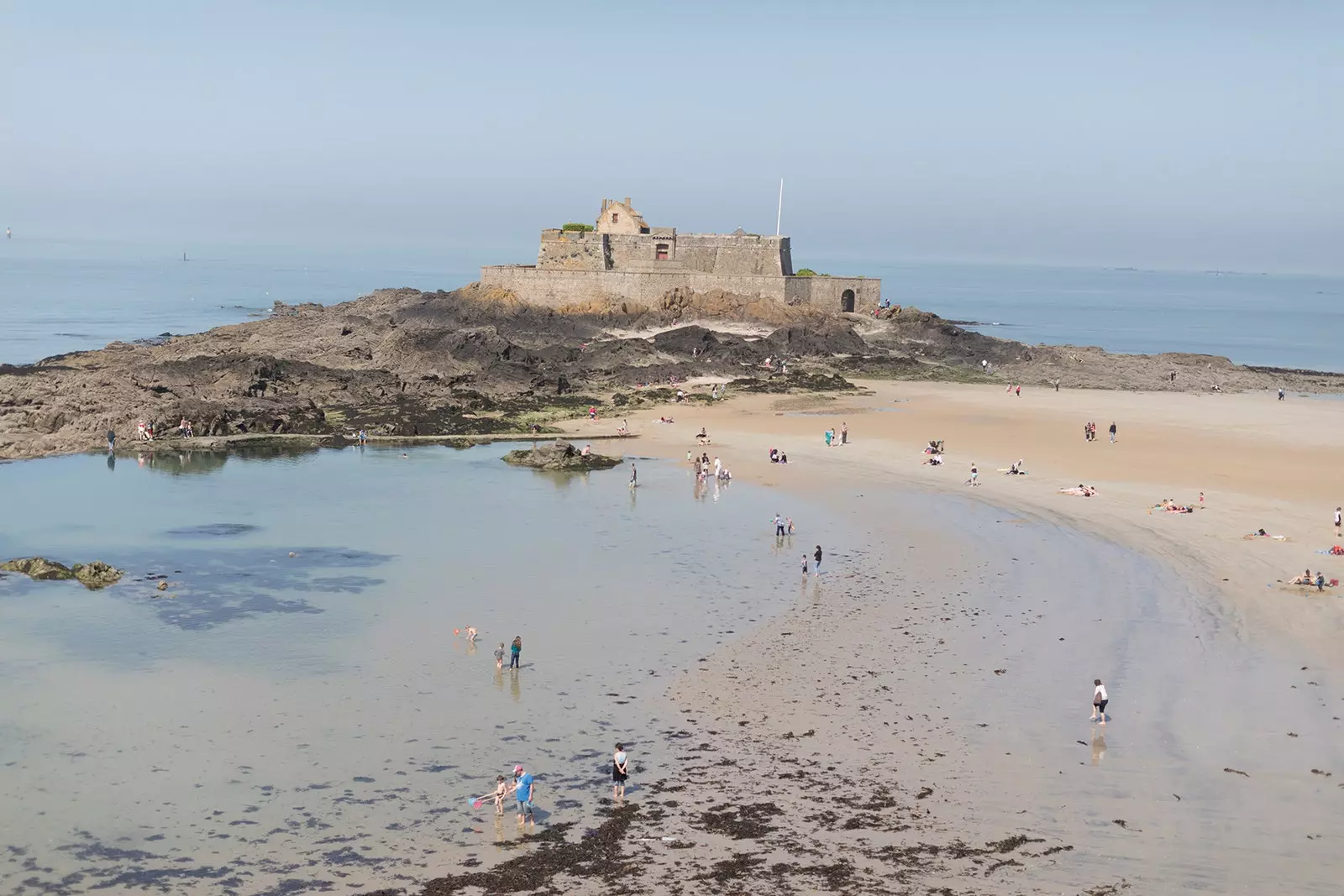
Beach next to the ramparts of Saint-Malo
The path advances along the 'Provencal coast of Brittany', among Mediterranean pines, flowers typical of more southern latitudes and natural viewpoints such as La Pointe du Groin.
Until the eighteenth century, the walled city of Saint-Malo it was an island at high tide and a peninsula with low tide. The resemblance to Mont St-Michel is obvious, except that beyond its postcard image and its thick medieval walls, there is real life in Saint-Malo.
Built between the 12th and 18th centuries and bombed during the Second World War, Saint-Malo is the cradle of illustrious intellectuals, wealthy shipowners and a town with a reputation for being rebellious who never welcomed the fact that the Duchess Claudia, daughter of Anne of Brittany She married King Francis I of France.
** Chateaubriand was born here (1768) ** and here he asked to be buried, in Le Grande Be, one of the islands in the bay, “to continue in dialogue with the sea”. This was also the birthplace of two famous corsairs: Robert Surcouf (yes, the same one who played in Chef Rollinger's house) and René Duguay-Trouin; and Jacques Cartier, the sailor who discovered Canada when he was trying to reach China through the Northwest Passage.
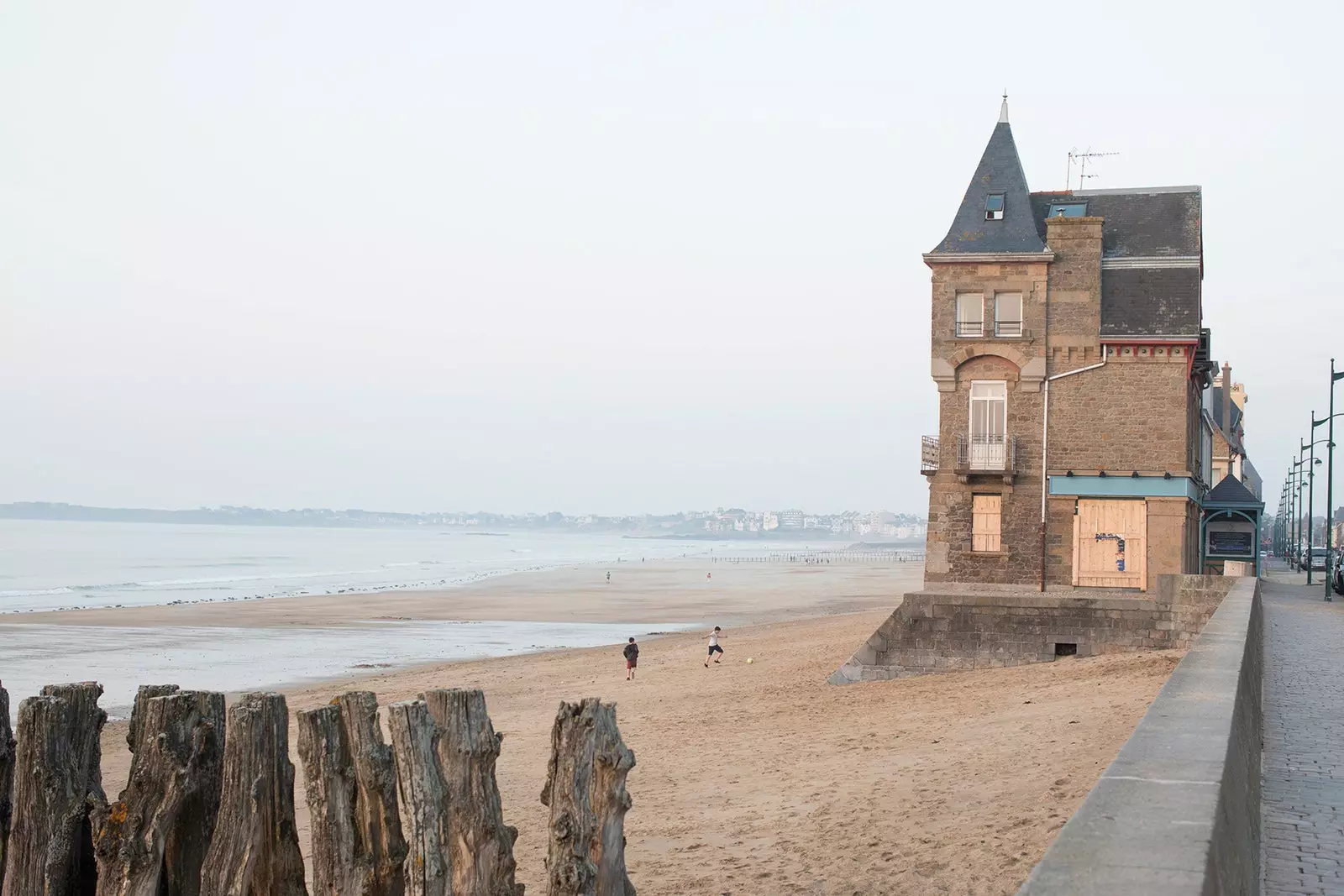
Beach outside the walls of Saint-Malo
But, in addition to diving into history by walking on its two kilometers of ramparts, Saint-Malo is a good place to take a gastronomic tour of Breton specialties, from crêpes (for example, at the Comptoir Breizh Café) to butter ( much more than butter if it bears the label of master craftsman Jean-Yves Bordier) to preserves (a good brand is Le Belle-Iloise).
Also to go on safari on the beach, accompanied by a naturalist (reservations at the tourist office). And of course, to take a good dip , it's about time.
If the sea is in retreat, you can always jump from Bon Secours beach swimming pool trampoline , pride of the city. It was built in 1937 by René Lesaunier, director of one of the spa establishments that existed at the time, to compete with the swimming pool of the coquettish neighbor Dinard, which can be seen in the distance, on the other side of the bay.
It was built by wealthy British vacationers and populated by French aristocrats who wanted to rub shoulders with the English. It is the stage where Éric Rohmer shot his Summer Tale , and where Salma Hayek and her husband, François-Henri Pinault, spend their vacations unmolested.
They say that Hitchcock learned to swim here and that Agatha Christie put on her first bikini in these parts.
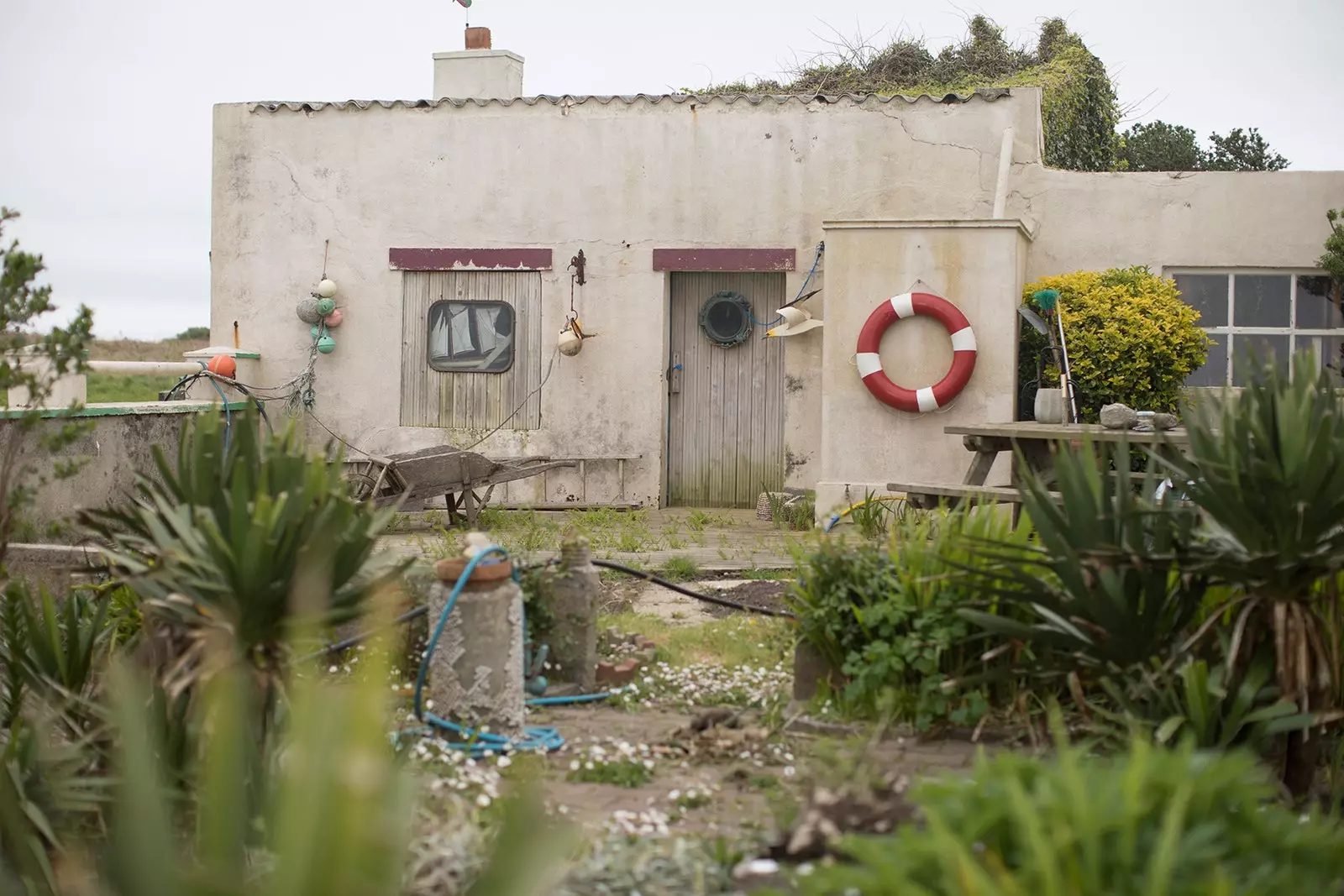
Seafaring house on the island of Ouessant
Our path continues through miles of beaches, some wild, and towns such as St. Lunaire , with its large villas, or St. Briac-sur-Mer, the little fishing village inhabited by artists where the Romanovs took refuge for four generations.
A certain pinkish tone in the rocks is the appetizer of what is to come. The spa town of Perro-Guirec has twenty hotels, three beaches, two ports, a nautical center, a diving center and the most important bird reserve in France, the Seven Islands.
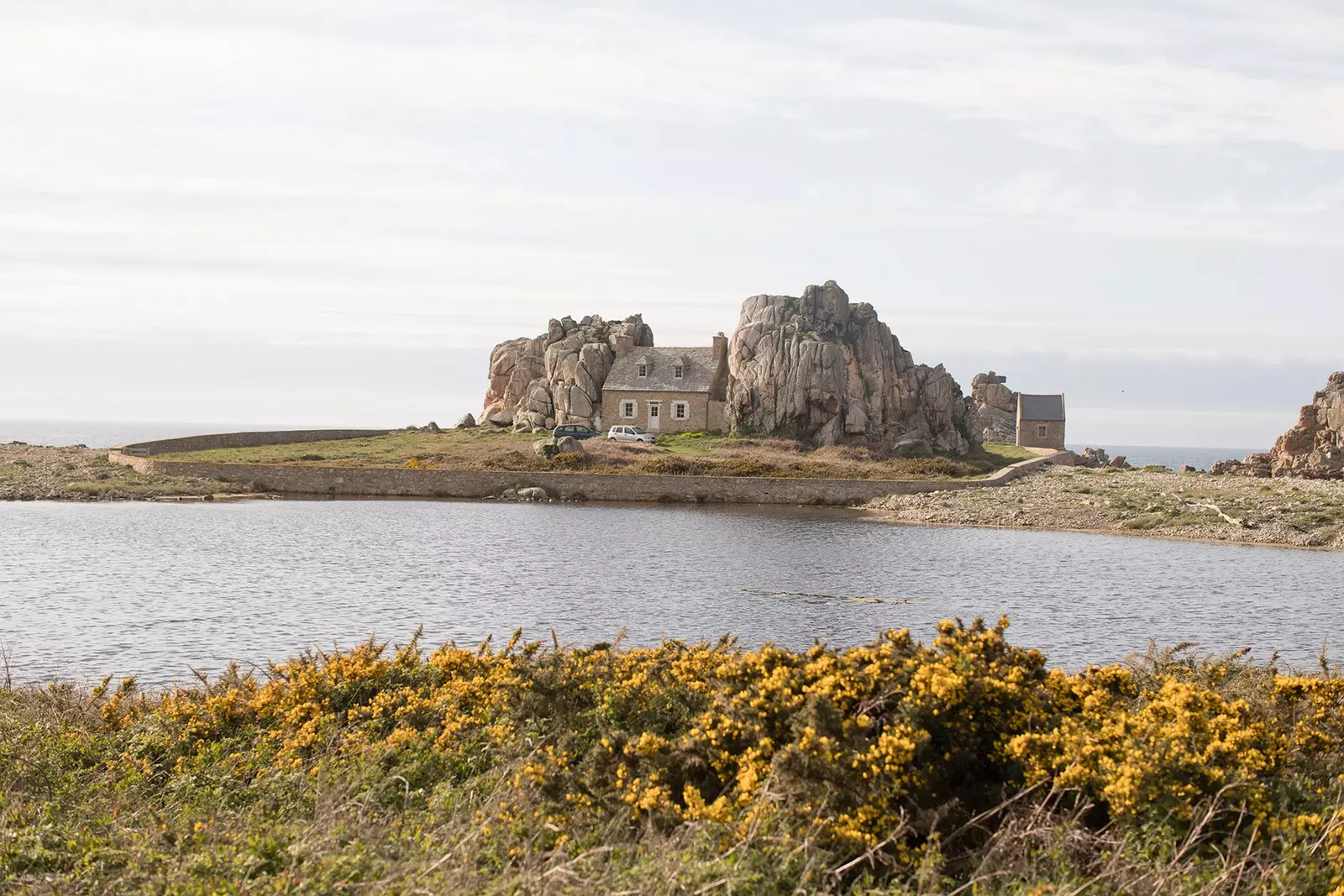
Granitic formations at Le Grouffre, the pink granite coast, private property
It also has the most beautiful stretch of coastline on the Breton coastline. There are only three pink granite coasts in the world: in Corsica, in China and here . The landscape is pure lysergic fantasy, with balanced rocks that do not correspond to the laws of gravity, and shapes that remind us of the creatures of Spirited Away.
Between them stands a lighthouse built with the same strawberry-colored stone. It is one of the most recognizable in Brittany, but not the most important. Such an honor belongs to the lighthouses of the island of Ouessant and, specifically, to those of Kéréon , which rises in the midst of the sea, and to the Le Créac'h , the most powerful in Europe, capable of lighting up to 60 km away and thus protecting ships from one of the most dangerous currents in the world.
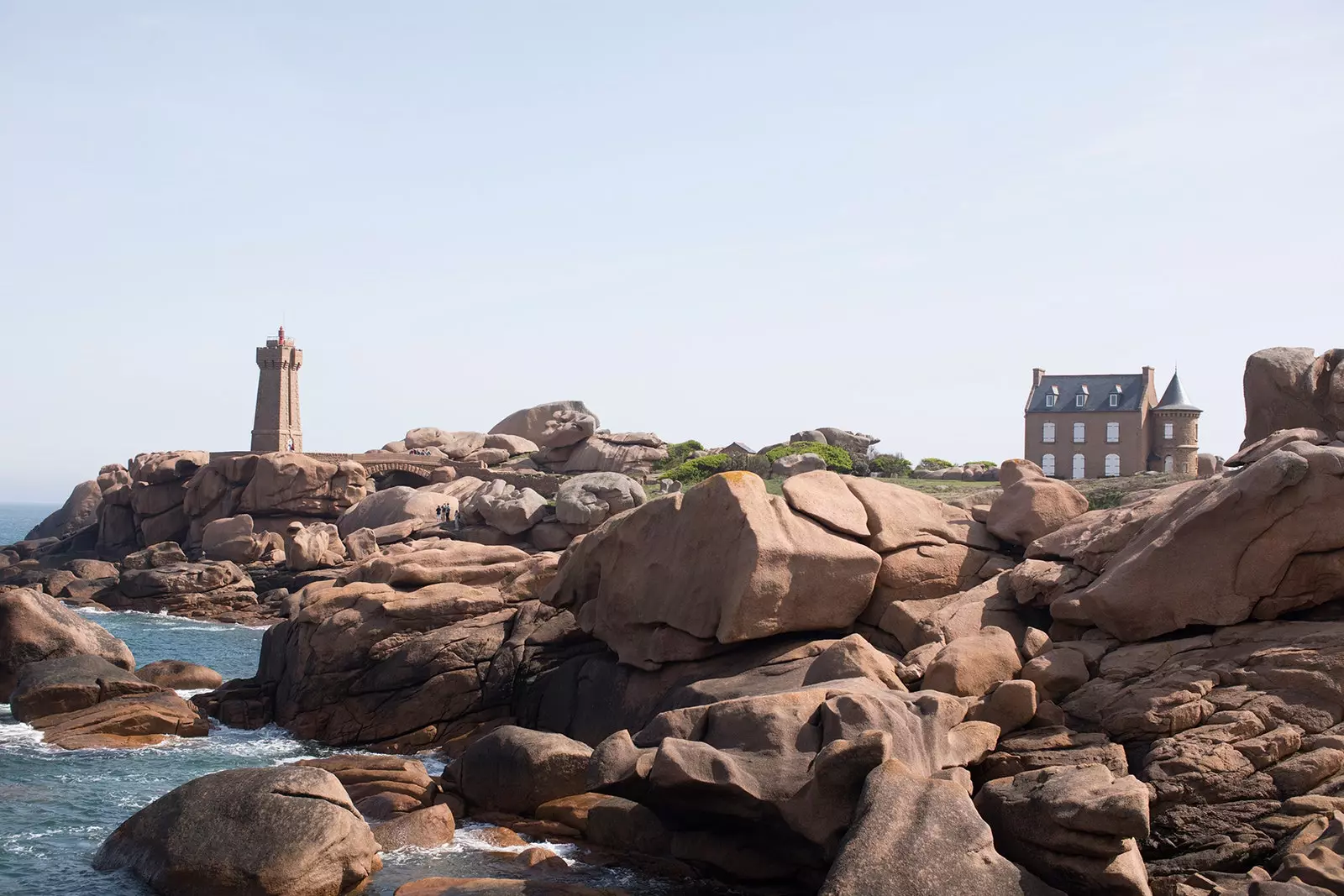
Panoramic view of the pink granite coast with the Ploumanac'h lighthouse in the background
Because of its location at the tip of the continent, Wherever the waters of the English Channel meet the Atlantic, Ushant seems remote and isolated, something that its inhabitants (about 400 in winter, 2,500 in summer) are in charge of denying.
Here the social life is intense. In addition, in the last ten years the island has experienced a clear renaissance with the arrival of new inhabitants and projects. Most are natives of the island, who return.
This is the case of Odine, who has set up a sustainable fishing business and also works as a tour guide, or Frederic, who five years ago decided to open a creperie.
Others, however, are from abroad, like Emmanuel, who has fulfilled his dream of running a restaurant, or like Helene , journalist and editor, and one of the last to arrive. What does she like the most? When she remembers the people in the Paris metro, she confesses with satisfaction: “ Ouessant is the only place I cry when I leave." The same will happen to us.
*_This report was published in number 119 of Condé Nast Traveler Magazine (July-August). Subscribe to the printed edition (11 printed issues and a digital version for €24.75, by calling 902 53 55 57 or from our website). The July-August issue of Condé Nast Traveler is available in its digital version to enjoy on your preferred device. _
